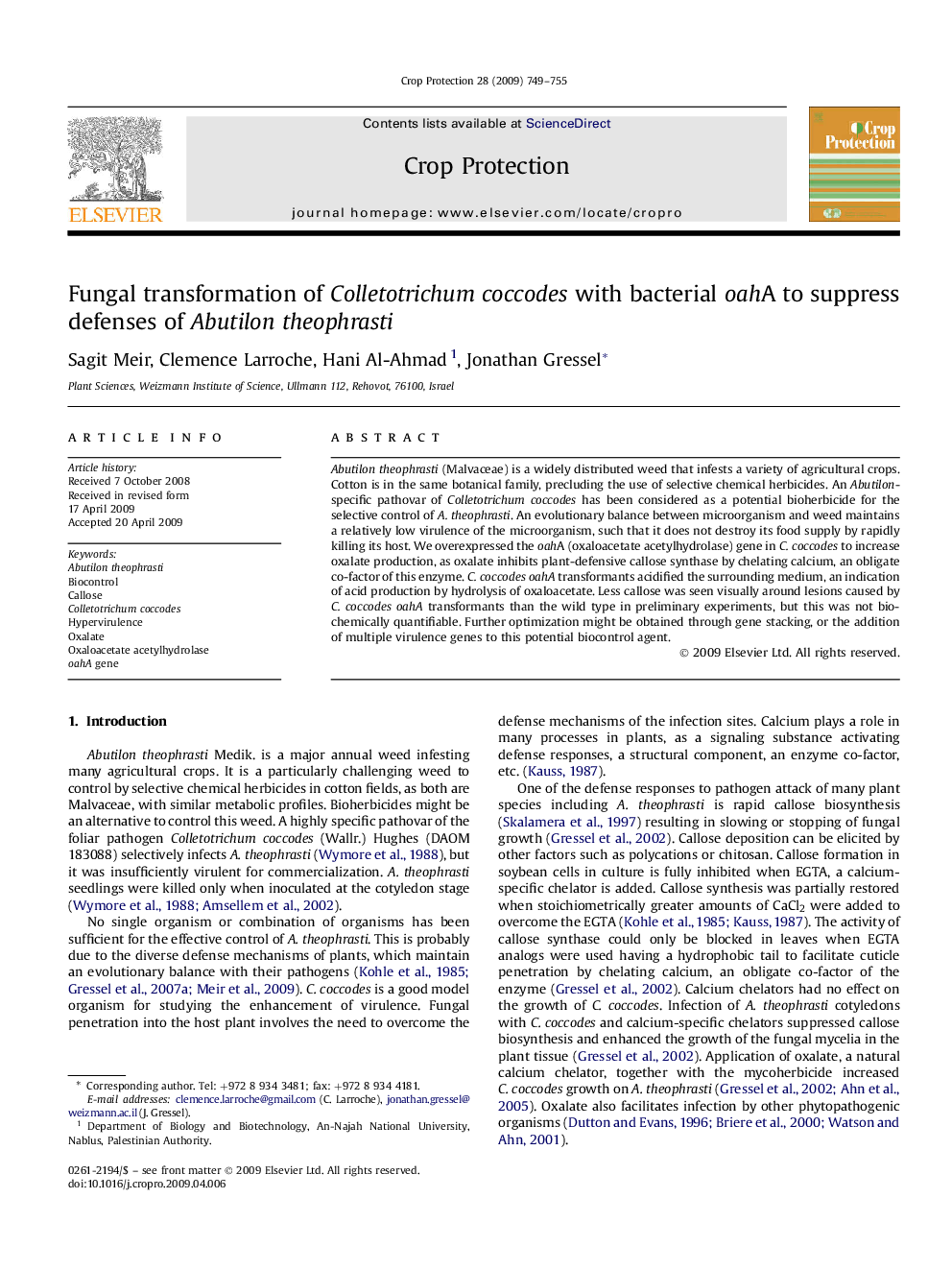| Article ID | Journal | Published Year | Pages | File Type |
|---|---|---|---|---|
| 4507526 | Crop Protection | 2009 | 7 Pages |
Abstract
Abutilon theophrasti (Malvaceae) is a widely distributed weed that infests a variety of agricultural crops. Cotton is in the same botanical family, precluding the use of selective chemical herbicides. An Abutilon-specific pathovar of Colletotrichum coccodes has been considered as a potential bioherbicide for the selective control of A. theophrasti. An evolutionary balance between microorganism and weed maintains a relatively low virulence of the microorganism, such that it does not destroy its food supply by rapidly killing its host. We overexpressed the oahA (oxaloacetate acetylhydrolase) gene in C. coccodes to increase oxalate production, as oxalate inhibits plant-defensive callose synthase by chelating calcium, an obligate co-factor of this enzyme. C. coccodes oahA transformants acidified the surrounding medium, an indication of acid production by hydrolysis of oxaloacetate. Less callose was seen visually around lesions caused by C. coccodes oahA transformants than the wild type in preliminary experiments, but this was not biochemically quantifiable. Further optimization might be obtained through gene stacking, or the addition of multiple virulence genes to this potential biocontrol agent.
Related Topics
Life Sciences
Agricultural and Biological Sciences
Agronomy and Crop Science
Authors
Sagit Meir, Clemence Larroche, Hani Al-Ahmad, Jonathan Gressel,
